The Taj Mahal
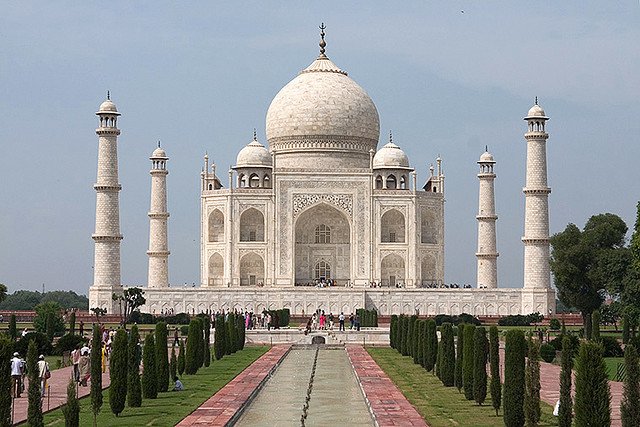
Shah Jahan was the fifth leader of the Mughal administration. Amid his third regnal year, his most loved spouse, known as Mumtaz Mahal, kicked the bucket because of difficulties emerging from the introduction of their fourteenth kid. Profoundly disheartened, the ruler began arranging the development of a reasonable, lasting resting place for his adored spouse very quickly. The consequence of his endeavors and assets was the formation of what was known as the Luminous Tomb in contemporary Mughal messages and is the thing that the world knows today as the Taj Mahal.
All in all terms, Sunni Muslims support a straightforward internment, under an open sky. However, outstanding domed mausolea for Mughals (and additionally for other Central Asian rulers) were worked preceding Shah Jahan's run, so in such manner, the Taj isn't extraordinary. The Taj is, be that as it may, excellent for its amazing scale, shocking greenery enclosures, extravagant ornamentation, and its unmistakable utilization of white marble.
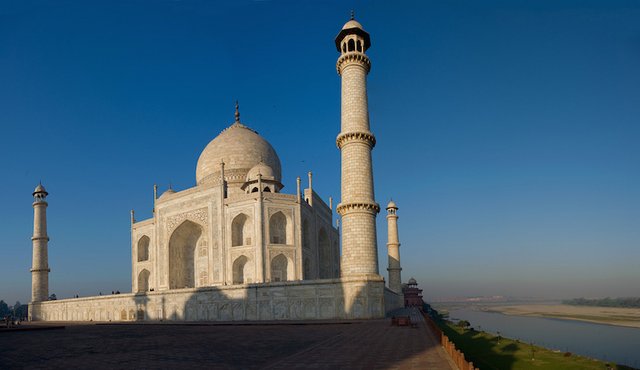
The Location
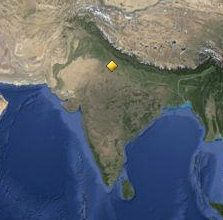
Shah Jahan fabricated the Taj Mahal in Agra, where he took the position of authority in 1628. To start with vanquished by Muslim intruders in the eleventh century, the city had been changed into a thriving territory of exchange amid Shah Jahan's run the show. Arranged on the banks of the Yamuna River took into account simple access to water, and Agra soon earned the notoriety for being a "riverfront cultivate city," by virtue of its carefully arranged patio nurseries, rich with blooming hedges and organic product bearing trees in the sixteenth century.
Paradise on Earth
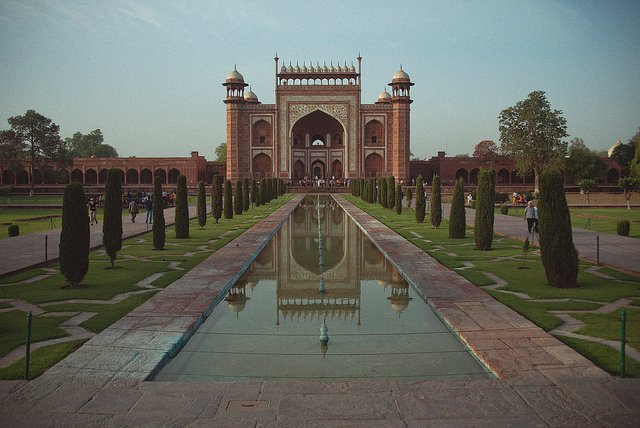
Section to the Taj Mahal complex by means of the forecourt, which in the sixteenth century housed shops, and through an amazing door of trimmed and very enlivened red sandstone established for a first connection of great magnificence and symmetry: adjusted along a long water channel through this entryway is the Taj—set gloriously on a raised stage on the north end. The rectangular complex runs approximately 1860 feet on the north-south pivot, and 1000 feet on the east-west hub.
The white-marble sepulcher is flanked on either side by indistinguishable structures in red sandstone. One of these fills in as a mosque, and the other, whose correct capacity is obscure, gives compositional adjust.
The marble structure is beaten by a bulbous vault and encompassed by four minarets of equivalent tallness. While minarets in Islamic engineering are normally connected with mosques—for use by the muezzin who drives the call to supplication—here, they are not utilitarian, but rather decorative, by and by underscoring the Mughal center around auxiliary adjust and concordance.
The inside floor design of the Taj shows the hasht bishisht (eight levels) guideline, insinuating the eight levels of heaven. Comprising of eight corridors and side rooms associated with the fundamental space in a cross-hub design—the favored outline for Islamic engineering from the mid-fifteenth century—the focal point of the principle chamber holds Mumtaz Mahal's complicatedly finished marble cenotaph on a raised stage. The head's cenotaph was set down close to hers after he kicked the bucket three decades later—both are encased in an octagon of wonderfully cut white-marble screens. The caskets bearing their remaining parts lie in the spaces straightforwardly underneath the cenotaphs.
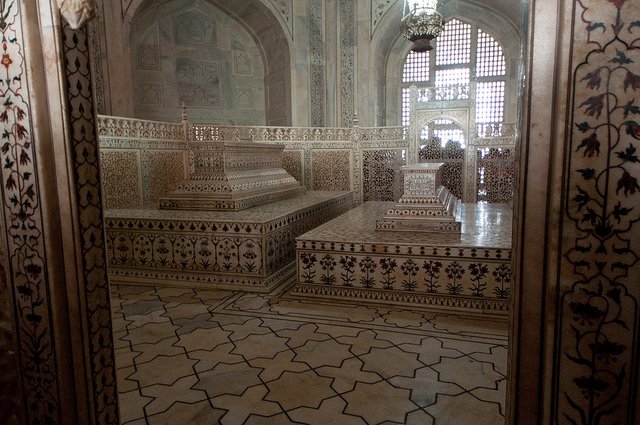
Qur'anic verses engraved into the dividers of the building and plans trimmed with semi-valuable stones—coral, onyx, carnelian, amethyst, and lapis lazuli—add to the quality of the Taj's white outside. The overwhelming topic of the cut symbolism is botanical, demonstrating some unmistakable, and other whimsical types of blossoms—another connect to the subject of heaven
A portion of the Taj Mahal's engineering wires viewpoints from other Islamic conventions, however different perspectives reflect with indigenous style components. Specifically, this is apparent in the umbrella-formed decorative chhatris (arch molded pavillions) on the structures and minarets.
What's more, while most Mughal-period structures tended to utilize red stone for outsides and practical engineering, (for example, military structures and fortresses)— holding white marble for unique internal spaces or for the tombs of sacred men, the Taj's whole principle structure is built of white marble and the helper structures are made out of red sandstone. This white-and-red shading plan of the fabricated complex may compare with standards set down in antiquated Hindu writings—in which white remained for virtue and the holy class, and red spoke to the shade of the warrior class.
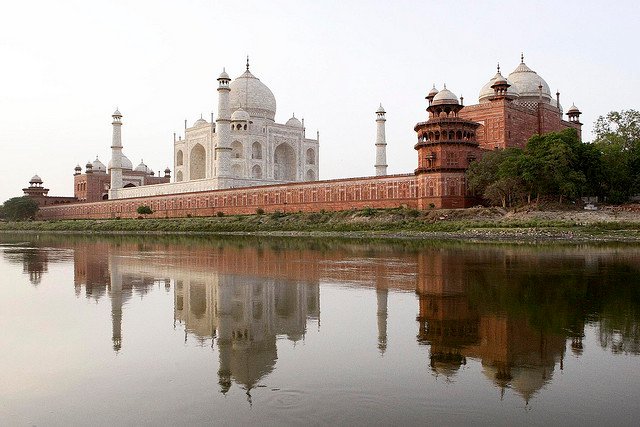
At the point when seen from the Mahtab Bagh, moonlight gardens, over the stream, be that as it may, the landmark has all the earmarks of being halfway situated in a more fabulous complex than initially thought. This view, just conceivable when one joins the Yamuna River into the complex, addresses the splendor of the planner. Also, by raising the Taj onto a hoisted establishment, the manufacturers guaranteed that Shah Jahan's funerary mind boggling and in addition the tombs of other Mughal nobles alongside their appended patio nurseries could be seen from numerous edges along the waterway.
The garden fused conduits and wellsprings. This was another sort of planting that was acquainted with India by Babur, Shah Jahan's incredible awesome granddad in the sixteenth century. Given the progression of time and the mediation of numerous people in the garden since its development, it is difficult to decide the first planting and format plan of the garden beds at the Taj.
From the beginning, the Taj was thought about as a building that would be associated with its heavenliness for a long time to come, and keeping that in mind, the best material and abilities were utilized. The finest marble originated from quarries 250 miles away in Makrarna, Rajasthan. Mir Abd Al-Karim was assigned as the lead planner. Abdul Haqq was picked as the calligrapher, and Ustad Ahmad Lahauri was made the manager. Shah Jahan ensured that the standards of Mughal engineering were joined into the outline all through the building procedure.
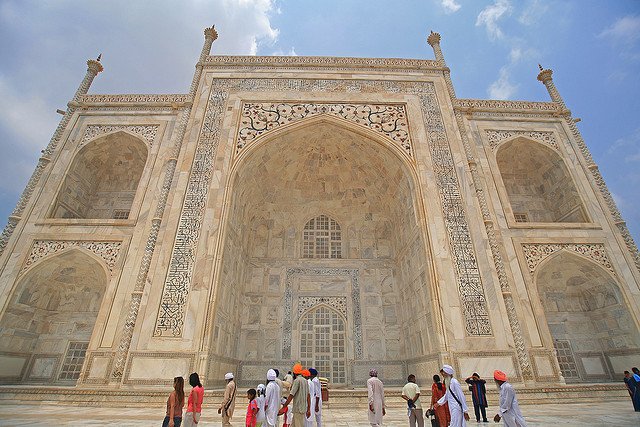
What the Taj Mahal Represents
At the point when Mumtaz Mahal passed on at age 38 of every 1631, the sovereign is accounted for to have declined to participate in court celebrations, deferred two of his children's weddings, and professedly made regular visits to his significant other's brief resting place (in Burhanpur) amid the time it took for the working of the Taj to be finished. Stories like these have prompted the Taj Mahal being alluded to as a design "image of affection" in well known writing. In any case, there are different hypotheses: one proposes that the Taj isn't a burial service landmark, and that Shah Jahan may have constructed a comparable structure regardless of whether his significant other had not kicked the bucket. In view of the allegorical specificity of Qur'anic and different engravings and the head's affection for positions of royalty, another hypothesis keeps up that the Taj Mahal is an emblematic portrayal of a Divine Throne—the seat of God—on the Day of Judgment. A third view holds that the landmark was worked to speak to a reproduction of a place of heaven. In the "paradisiacal house" hypothesis, the Taj was something of a vanity venture, worked to commend Mughal lead and the sovereign himself.
In the event that his promotion to the position of authority was smooth, Shah Jahan's takeoff from it was most certainly not. The head kicked the bucket not as a ruler, but rather as a detainee. Consigned to Agra Fort under house capture for a long time before his passing in 1666, Shah Jahan could appreciate just a far off perspective of the Taj Mahal. Yet, the brilliant marble sepulcher he worked "because of family" bears, over 350 years after it was built, and is accepted to be the most unmistakable sight on the planet today. Let go adjacent to his dearest spouse in the Taj Mahal, the man once called Padshah—King of the World—appreciates persisting notoriety, as well, to have charged the world's most indulgent and significant sepulcher.
Content by Roshna Kapadia
Backstory
The Taj Mahal is one of the world's awesome vacation spots, facilitating a huge number of guests every year. Despite the fact that it was assigned as UNESCO World Heritage Site in 1983 and is right now directed by the Archeological Survey of India, its overwhelming guest movement is only one of the numerous components that debilitate the trustworthiness of the site.
One of the greatest hazard factors for the Taj Mahal is air contamination, which stains the outside and, a few specialists think, causes corrosive rain that crumbles the marble. Air contamination is caused by a huge number of elements including industry, vehicle emanations, and the consuming of family unit squander. The legislature of India assigned a zone called the Taj Trapezium Zone (named for its trapezoidal shape), a 10,400 square kilometer swath (around 4,000 square miles) of Agra enveloping the Taj Mahal and additionally the Agra Fort and the memorable Mughal settlement of Fatehpur Sikri. Oil refineries and coal-consuming enterprises have been requested to manage their emanations or change to gaseous petrol inside this zone, and most have gone along.
There has likewise been a restriction on auto activity close to the Taj Mahal, air quality screens have been introduced, and the Archeological Survey of India has proposed a traveler top and expanded charges to constrain guest affect.
Another potential hazard for the Taj Mahal is the going away of the Yamuna River, which streams along the back of the complex. The waterway has been incompletely dammed upstream from the Taj Mahal so as to enlarge metropolitan water supplies, and some contend that the adjustments in the dirt because of the lower water table might undermine the auxiliary honesty of the landmark. Different activists and researchers have guaranteed to have discovered splits in the marble stage, sinking of the structure, and tipping of the minarets, however UNESCO affirms that
The physical texture is in great condition and basic strength, nature of establishment, verticality of the minarets and other constructional parts of Taj Mahal have been examined and keep on being observed.
The Taj Mahal is properly a best goal for many explorers. As worldwide tourism develops and the monetary weights of industry keep on increasing, the experts who manage the site must endeavor to actualize legitimate and auxiliary measures to guarantee that this key landmark survives.
Hi! This is jlk.news intelligent bot. I just upvoted your post based on my criteria for quality. Keep on writing nice posts on Steemit and follow me @jlkreiss to get premium world news updates round the clock! If you like, just upvote my comment! 🦄🦄🦄